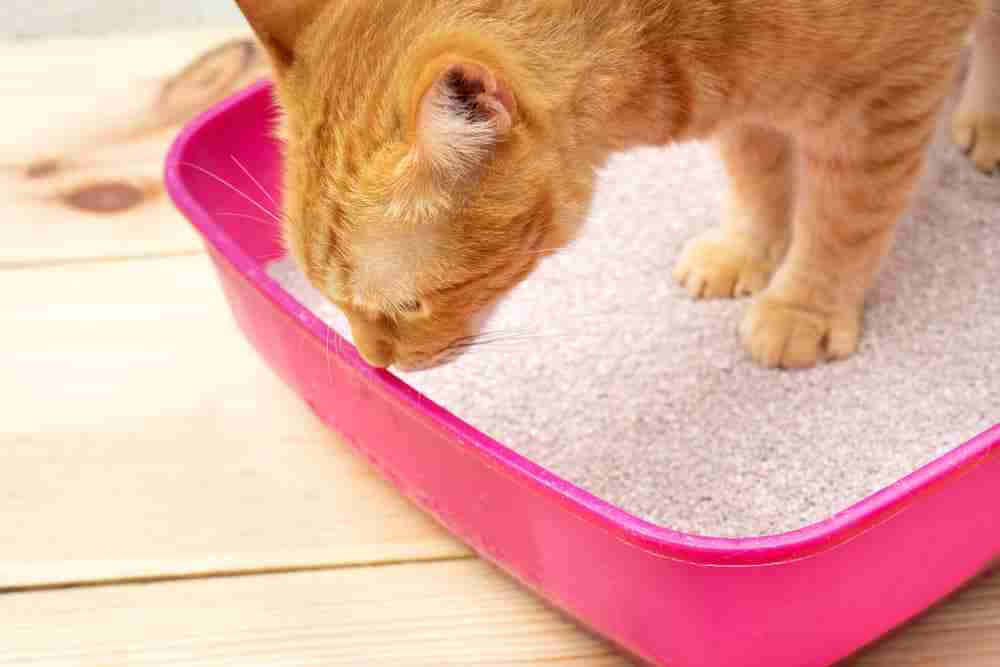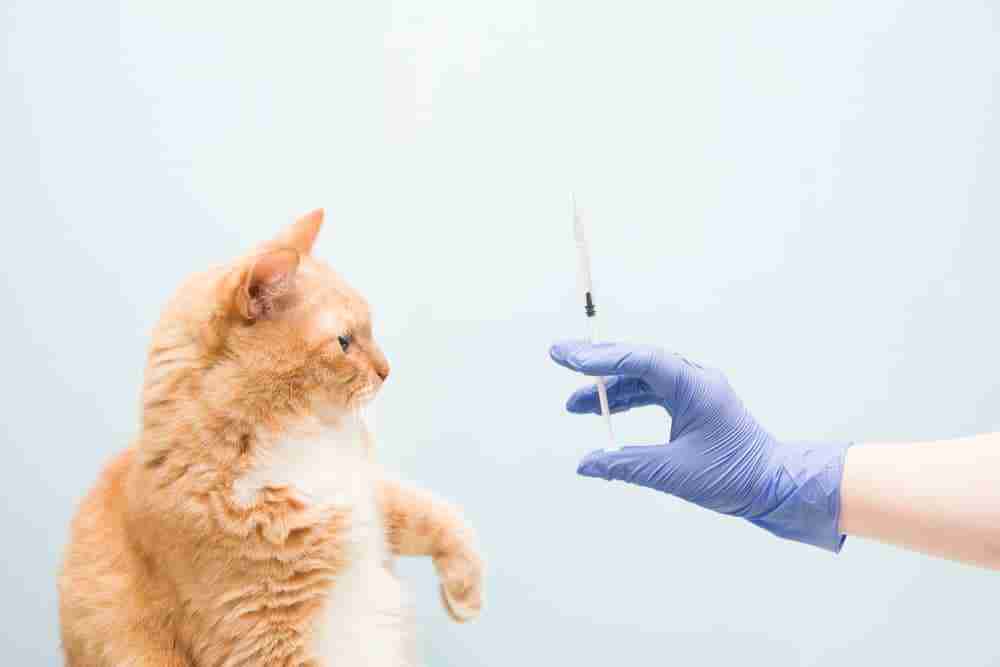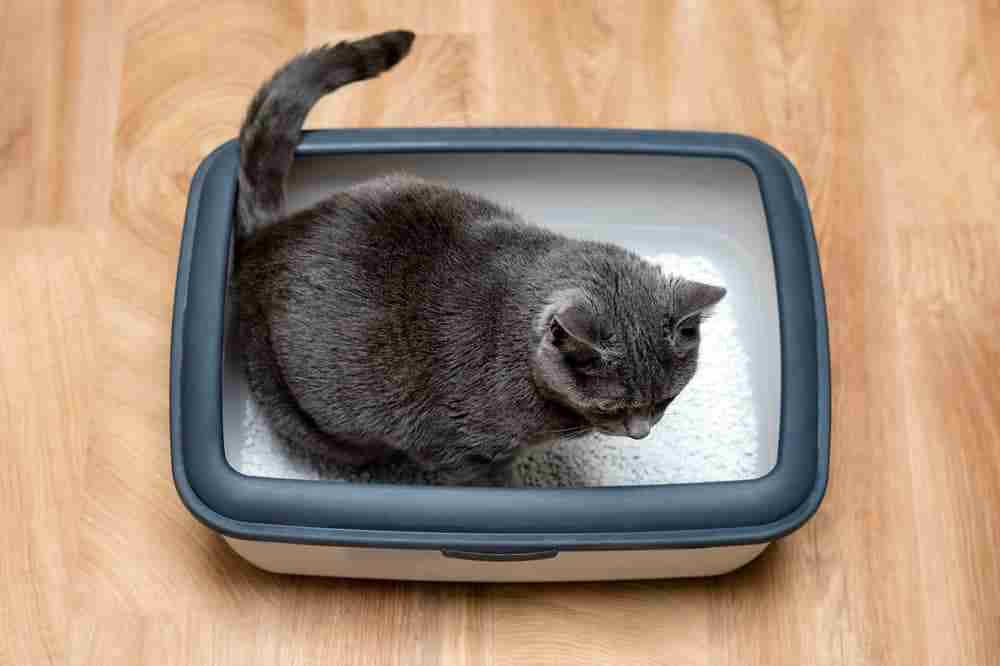Blood in cat poop? Are you sure you have identified the situation properly? Do you want to know what the likely causes of the condition are and how serious the situation might be? Should you panic or is it a normal condition? Can the situation be treated at home if at all and does your cat need a vet? For the answers to these questions and more read on.
What Does It Look Like?
How do you know if your cat has blood in its stool? Well, it could be really obvious. The poo may have obvious red or pink blood on the surface or your cat may have left drips of obvious blood when they pooped.
Alternatively, the feces may look mottled or have a tarry appearance. The dark, tarry spots are the blood that has been partially digested by enzymes in the small intestine and then mixed in with the stool. The excrement might have a consistent tarry appearance, maybe spotted or streaked with tarry areas, or might just have a tarry appearance at one end of the stool.
The overall position and characteristics of the tarry blood within the poop can help identify from where in the gastrointestinal (GI) tract the blood has come.
Fresh blood on feces (red/pink) is usually from the lower intestinal tract or close to the exit. The blood has not had time to dry out and nor is it black in appearance.
Generally speaking, tarry deposits from higher up in the GI tract are more of a concern than red/pink blood deposits that might have causes closer to the exit from your cat’s GI tract.
If you see fresh blood in the litter tray be sure red/pink blood on the stool is not from urine as this may have different causes that need rectifying.

What Causes Blood In Cat Stool?
Blood in cat poo can have lots of different causes. “Colitis” is the name given to inflammation of the colon. The inflammation can be a symptom of many different conditions that can give rise to blood in the stool. Here are some of the most common causes of colitis that might give rise to blood in your cat’s poop :
Constipation
Growths – polyps, tumors or cysts
Parasites – various worms
Trauma or abscesses
Poisons/toxins
Cancer
Liver or Kidney Disease
Foreign body blockage.
Clearly, some of these issues are far more serious than others and treatment will vary accordingly.
What To Do If Your Cat Has Blood In Their Poo.
If you suspect you have identified blood in your cat’s stool the first thing to do is avoid panicking and try to calmly get an idea of how your cat might be doing healthwise, overall.
If your cat has no additional symptoms, seems to be behaving normally, and just has some red blood spots in the stool you can probably wait a day or two for a vet consultation if necessary. Fresh, red blood in very small quantities is usually less problematic than darker blood deposits.
Any stools with tarry-looking blood deposits are potentially serious and your cat will need an examination by a vet as soon as possible. Even without other symptoms, tarry blood deposits could signify a serious issue that needs resolving quickly, like internal bleeding.
Ask yourself whether your cat has lost weight, stopped drinking, become lethargic or has any other symptoms (additional mucus in poop, relieving themselves outside the box). If they have any of these additional symptoms, whether the blood is red or tarry could signify a much more serious issue that might be a medical emergency. In these instances take your cat to see a vet immediately.
In all instances, you are going to want to take your cat to be checked out by the vet sooner or later. When you do go to see the vet it would be wise to take the stool along so the vet can assess the stool for themselves and take and send samples to a lab if necessary.
How Will The Vet Treat Your Cat
If you have identified blood in your cat’s stool you should take the cat along to the vet for an examination at the earliest opportunity. You should consider tarry deposits to be an issue that requires an immediate appointment with the vet.
When you get to the vet, how will the vet deal with your cat? This is how the appointment will likely go down.
Medical history – first off the vet is going to want to know symptoms and timelines. Is this a recent issue, has anything else changed like diet, activity, when did you first notice the problem, is the cat under the weather in any way or acting abnormally?

Physical exam – whilst you are advising the vet of the history and nature of the problem the vet is probably going to check your cat’s eyes, ears, and mouth visually. They will also physically exam your cat’s intestines and organs by touch. They will be looking at the general condition of your cat, checking the obvious problems like blockages and swellings, and checking that your cat has healthy life signs – gum color can identify a whole host of potential issues. White gums may indicate blood loss or shock, yellow-tinged guns might be indicative of potential liver problems…
May test your cat’s stool – if you have brought a sample with you, apart from allowing the vet to see the problem first hand, it also allows the vet to check the stool for parasites or bacterial growth. Parasites may be a cause of the blood in the stool so a test can be useful to rule in or out any parasite issues.
If the vet can make firm conclusions based on the initial exam and sample, that may well be the end of the visit. If the causes remain unclear or the vet believes there may be other, unknown, issues at play then your vet may recommend further examination. This will potentially include :
Blood tests – used to identify a whole range of issues including kidney, liver, hormonal issues, can identify inflammation and even the potential likelihood of tumors.
An x-ray – an x-ray may show evidence of blockages or foreign bodies that might be the cause of your cat’s condition. They may also identify or show evidence of tumors. If your vet suspects that surgery may be required they will often use an x-ray image for initial guidance and pinpointing of potential issues.
Urine Sample – a urine sample can quickly identify kidney and/or liver disease, protein in the urine which might be indicative of inflammation, hemorrhage, infections, or other disorders.
The vet may recommend an endoscopy or exploratory surgery to check or clear blockages, assess potential tumors, or visually inspect the GI tract for other issues.
Clearly, when looking at some of the potential causes of blood in cat poop, some are more serious than others and require significant treatment. Eliminating issues caused by food intolerances may be as simple as changing out the food your cat eats. The elimination of parasites may be another simply resolved issue. Fixing diarrhea, constipation, minor infections, and even abscesses and minor growths can all be relatively straightforward treatments.
However, even with that being said, it is clear that blood in cat stools is not something that can be treated at home. This is a condition that always needs appraisal by a vet even if the issue appears minor initially. There is always potential that the underlying cause may be something far more sinister like a blockage, tumor, cancer, or developing chronic disease…
